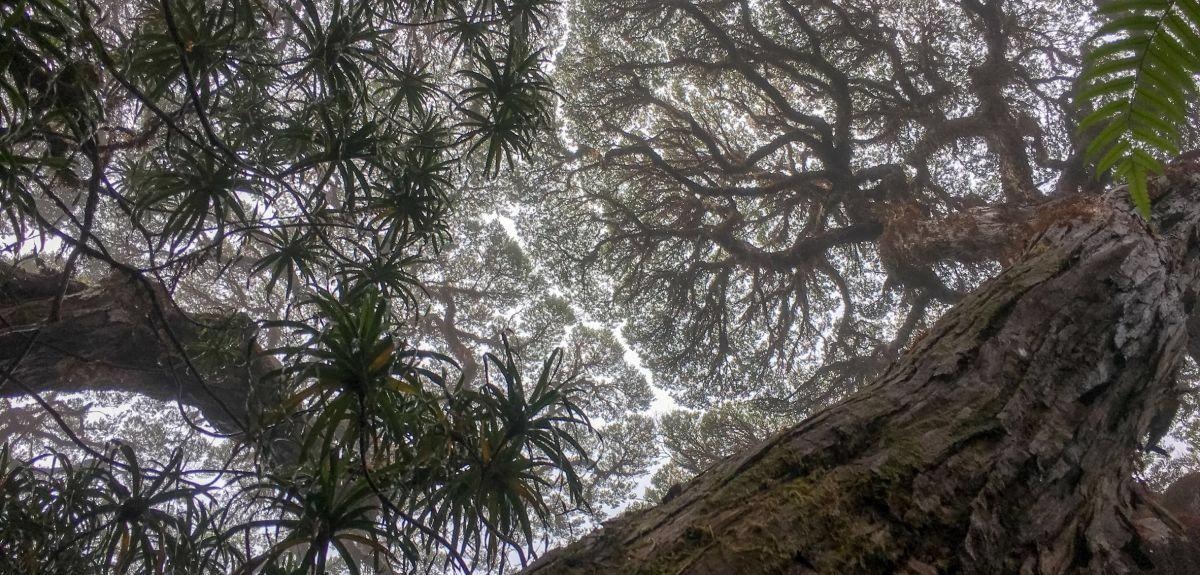According to a new study, tropical trees in rainforest regions of Australia have been dying at double the previous rate from the 1980s. This is apparently due to climate impacts.
 Northeast Australia's relict tropical rainforest is one of the oldest and most isolated rainforests in the world. Image Credit: Alexander Shenkin
Northeast Australia's relict tropical rainforest is one of the oldest and most isolated rainforests in the world. Image Credit: Alexander Shenkin
The long-term international study has been recently reported in the journal Nature.
This study has discovered the death rates of tropical trees that have doubled in the past 35 years as global warming increases the drying power of the air.
Deterioration of forests results in decreased biomass and carbon storage, thereby making it extremely hard to maintain global peak temperatures well below the target 2 °C, as needed by the Paris Agreement.
The recent study headed by scientists from the Smithsonian Environmental Research Center and Oxford University, and French National Research Institute for Sustainable Development (IRD), has utilized especially long data records from throughout Australia’s rainforests.
The study found that average tree death rates in such forests have doubled over the past 40 years. Scientists discovered trees are living nearly half as long, which is a pattern that is consistent throughout species and sites across the region. Also, according to the team, the effects could be observed as far back as the 1980s.
Dr. David Bauman, a tropical forest ecologist at Smithsonian, Oxford and IRD, and lead author of the study says, “It was a shock to detect such a marked increase in tree mortality, let alone a trend consistent across the diversity of species and sites we studied. A sustained doubling of mortality risk would imply the carbon stored in trees returns twice as fast to the atmosphere.”
Many decades of data are needed to detect long-term changes in long-lived organisms, and the signal of a change can be overwhelmed by the noise of many processes.
Dr. Sean McMahon, Study Senior Author and Senior Research Scientist, Smithsonian Environmental Research Center, Oxford University
Dr. Bauman and Dr. McMahon stated, “One remarkable result from this study is that, not only do we detect an increase in mortality, but this increase seems to have started in the 1980s, indicating the Earth’s natural systems may have been responding to changing climate for decades.”
In recent years the effects of climate change on the corals of the Great Barrier Reef have become well known.
Yadvinder Malhi, Study Co-Author and Professor, Oxford University
Malhi continued “Our work shows, if you look shoreward from the Reef, Australia’s famous rainforests are also changing rapidly. Moreover, the likely driving factor we identify, the increasing drying power of the atmosphere caused by global warming, suggests similar increases in tree death rates may be occurring across the world’s tropical forests.”
“If that is the case, tropical forests may soon become carbon sources, and the challenge of limiting global warming well below 2 °C becomes both more urgent and more difficult,” added Malhi.
Susan Laurance, Professor of Tropical Ecology at James Cook University, added, “Long-term datasets like this one are very rare and very important for studying forest changes in response to climate change. This is because rainforest trees can have such long lives and also that tree death is not always immediate.”
Also, recent studies performed in Amazonia have indicated tropical tree death rates are increasing, thereby declining the carbon sink. However, the cause is yet to be clearly understood.
Intact tropical rainforests are known as significant stores of carbon and so far, have been “carbon sinks”, serving as moderate brakes on the rate of climate change by absorbing nearly 12% of human-caused carbon dioxide emissions.
Analyzing the climate ranges of the tree species displaying the greatest death rates, the team indicates that the primary climate driver is the increased drying power of the air. Since there is a warming in the atmosphere, it withdraws more moisture from plants, thereby leading to increased water stress in trees and eventually a high risk of death.
When the scientists analyzed the numbers, it additionally displayed the loss of biomass from this mortality increase over the last few years has not been offset by biomass gains obtained from tree growth and recruitment of new trees.
This indicates that the mortality increase has rendered in a net decrease in the ability of such forests to balance carbon emissions.
The research group included collaborators from James Cook University, Oxford University, (Australia), and other institutions (UK, USA, France, Peru).
Journal Reference:
Bauman, D., et al. (2022) Tropical tree mortality has increased with rising atmospheric water stress. Nature. doi.org/10.1038/s41586-022-04737-7.